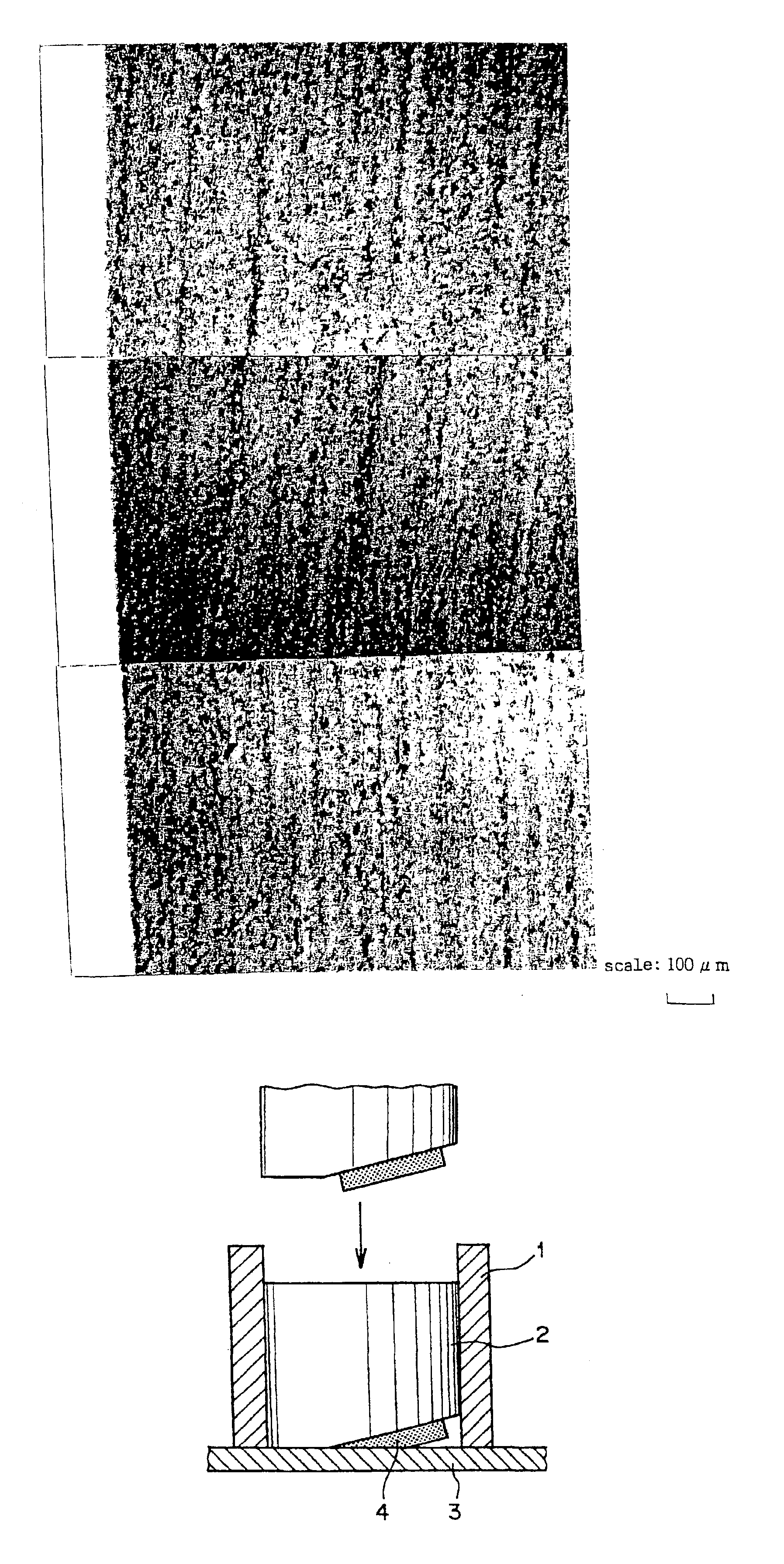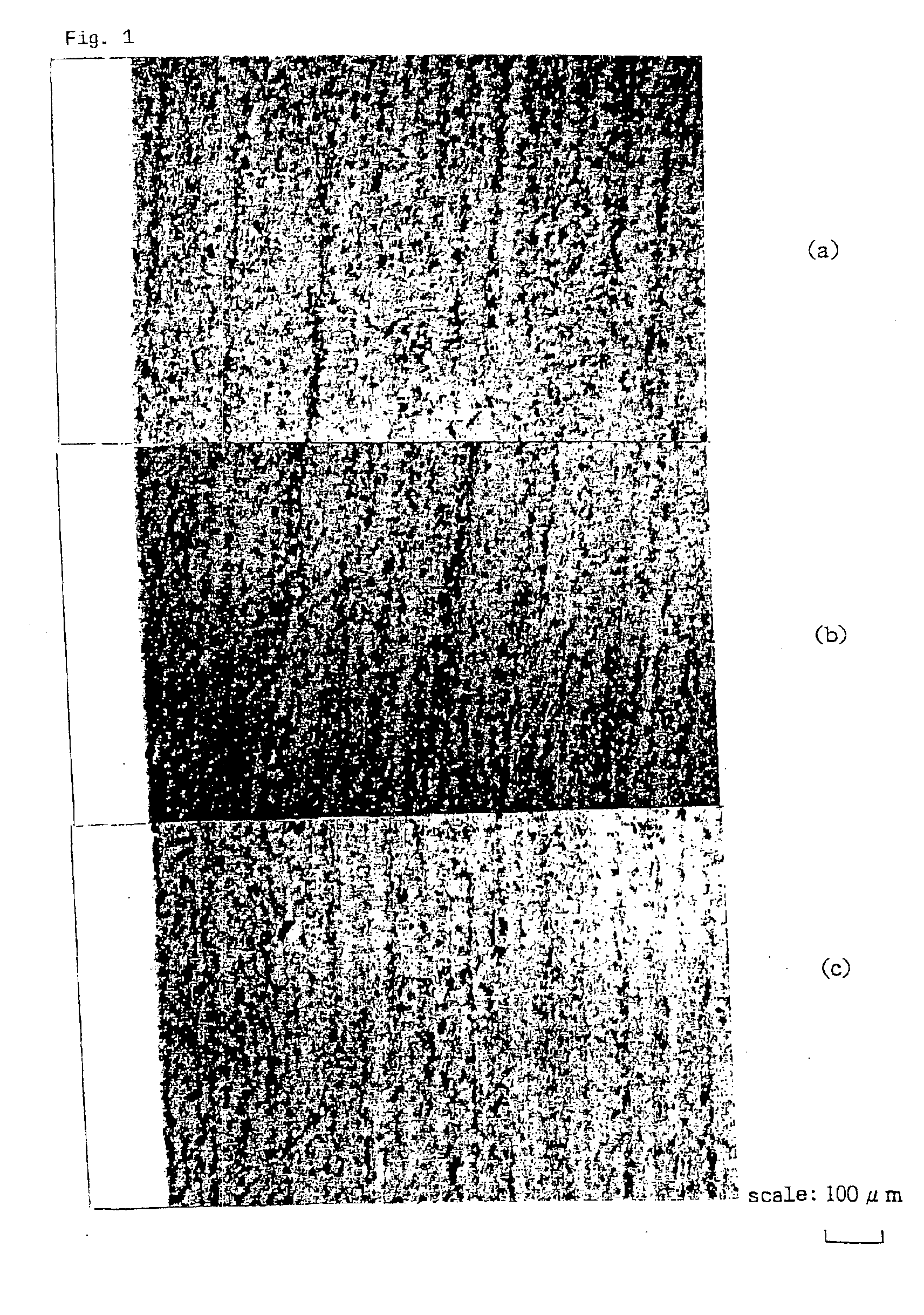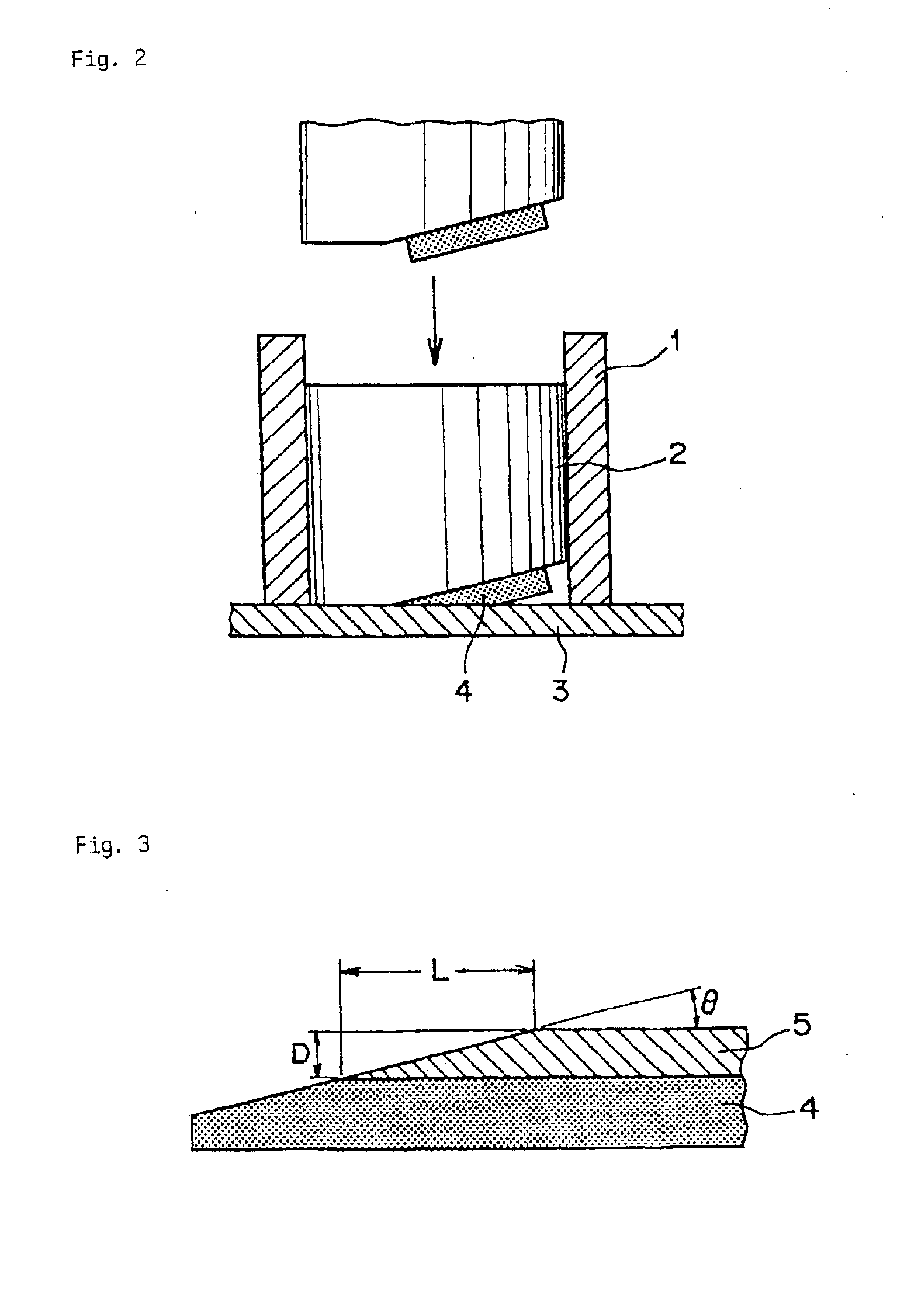Quartz glass jig for processing apparatus using plasma
a plasma processing and glass jig technology, applied in glass making apparatus, manufacturing tools, coatings, etc., can solve the problems of secondary adverse influence on silicon wafers, cracking of glass jigs from that portion, etc., and achieve the effect of high-quality semiconductor devices and low cos
- Summary
- Abstract
- Description
- Claims
- Application Information
AI Technical Summary
Benefits of technology
Problems solved by technology
Method used
Image
Examples
example 1
A surface of a quartz glass was processed with a whetstone made of diamond having a particle size of 100 μm to obtain a quartz glass-made ring for shielding having a surface roughness Ra of 1 μm. When the surface of this ring for shielding was observed by a microscope, 20 per millimeter of grinding marks were confirmed as shown in FIG. 1. Incidentally, FIG. 1 is a microscopic photograph of 100 magnifications of the surface of the ring for shielding described above, wherein (a) is an inner periphery side, (b) is a central portion, and (c) is an outer periphery side. With respect to a sample subjected to the same processing, after rinsing with 15% HF for 30 minutes, the sample was attached to a tip portion of a piston of a polishing apparatus shown in FIG. 2, the surface of the sample was inclined by 5° and polished to expose a microcrack layer 5 as shown in FIG. 3. A microscopic photograph at this time is shown in FIG. 4. In FIG. 4, at the right side a white portion is the portion su...
example 2
The quartz glass-made ring for shielding, wherein 200 per millimeter of the streaky grinding marks were confirmed on the surface thereof in Comparative Example 1, was subjected to sandblast processing with green carbon of #240 and then subjected to sandblast processing with green carbon of #400. Although in Comparative Example 1, the surface roughness Ra was 3 μm and the depth of the microcracks was 100 μm, after subjecting to sandblast processing with green carbon of #400, the streaky grinding marks were not observed even by a microscope. Also, the surface roughness Ra was 1.7 μm, and the depth of the microcracks was 40 μm. When this quartz glass jig was used as a ring for shielding of a plasma apparatus, after using for 3 weeks, particles were generated a little, but such was lower than that in the internal specification so that no problem was created, and the jig could be used for one month.
PUM
| Property | Measurement | Unit |
|---|---|---|
| surface roughness | aaaaa | aaaaa |
| surface roughness | aaaaa | aaaaa |
| depth | aaaaa | aaaaa |
Abstract
Description
Claims
Application Information
 Login to View More
Login to View More - R&D
- Intellectual Property
- Life Sciences
- Materials
- Tech Scout
- Unparalleled Data Quality
- Higher Quality Content
- 60% Fewer Hallucinations
Browse by: Latest US Patents, China's latest patents, Technical Efficacy Thesaurus, Application Domain, Technology Topic, Popular Technical Reports.
© 2025 PatSnap. All rights reserved.Legal|Privacy policy|Modern Slavery Act Transparency Statement|Sitemap|About US| Contact US: help@patsnap.com



